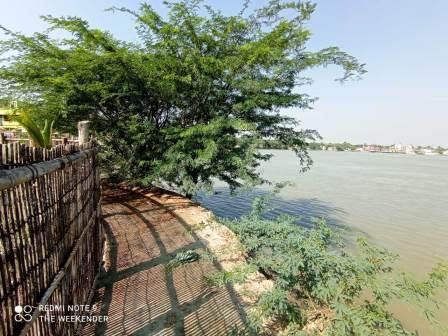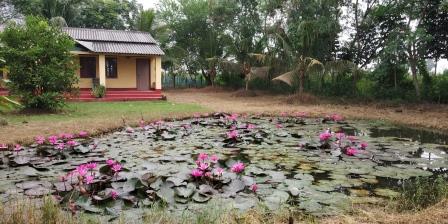Everything You Need To Know About Sundarban Safari
Known for hosting the biggest Mangrove Forests in the World, Sundarbans National Park is located in West Bengal, India. It is also a Tiger Reserve and a Biosphere reserve that provides a complete nature’s circle to the tourist right from ‘Royal Bengal tigers’ to roaring rivers and beautiful estuaries. Sundarbans National Park is a part of Sundarban delta that is covered with Mangrove Forest and the largest population of the Bengal Tigers. It is a UNESCO world heritage site with a large variety of birds and reptiles including saltwater Crocodile. Sundarban safari will be the most memorable trip in your life.
Shared between India and Bangladesh, the Sundarbans meaning beautiful forest, have been declared a UNESCO heritage site. This area has a silent charm that manages to amaze one with the simplicity and naturalness of its ecological balance in spite of offering habitat to some of the most dynamic and awe-inspiring flora and fauna.
How to Reach Sundarbans
By Road-Sundarbans is well connected to neighboring cities in West Bengal by a good network of roads. One can take a bus or car till Sonakhali, Godkhali, Namkhana, Canning, Raidighi or Najat and proceed up to Sundarbans through motorboats.
By Train-There are no direct trains to Sundarbans. The closest railway junction is Sealdah. One can reach Sundarbans via Canning by boarding one of the regular local trains running between Canning and Kolkata.
By Local Transport-River cruises on boats are the best way you can enjoy Sunderbans.
Accommodation in Sundarbans-
There are so many resorts/hotels in Sundarbans, island like Dayapur,Pakhiralay, Bali,Sonagar etc. The Indian side of Sundarbans measuring around 4000 sq. km consists of 102 islands just 16 short of the number of islands in the city of Venice. Out of 102 islands of Indian Sundarbans, 54 are inhabited and 48 are forested. Still, Indian Sundarban is around 10 times bigger than the city of Venice.
Our property is located in Sonagar island called Sundarban Tiger Safari Resort with 12 rooms, all are Non Ac-
- 4 nos. four bed Bamboo Cottage
- 4 nos.Four bedrooms
- 4 nos.Double Bed Mud House
What is the best time for Sundarban Safari?
September to March are the best months to visit Sundarbans, the winters being the most pleasant period in the area. Summers could be quite hot and send the temperature shooting up, but are an ideal time to visit the wildlife sanctuary. The monsoons with full generosity in showers may make travelling a little difficult but the lush green surroundings might just make up for it. Aside from spotting these majestic beasts in their natural habitat, Sundarban National Park also has an abundance of diverse flora and fauna that make visiting the attraction worth it. The climate in and around this area generally follows the pattern of most Indian cities, and thus, it has three distinct seasons, out of which the winters are the most prefered, though all of them have their pros and cons.
Monthly Weather in Sundarbans
| Month | Avg. Minimum (°C) | Avg. Maximum (°C) |
|---|---|---|
| January | 14 | 26 |
| February | 18 | 30 |
| March | 22 | 32 |
| April | 26 | 35 |
| May | 26 | 36 |
| June | 27 | 35 |
| July | 27 | 32 |
| August | 27 | 32 |
| September | 27 | 33 |
| October | 25 | 33 |
| November | 20 | 29 |
| December | 15 | 27 |
fo

Sundarban Watch Towers
To offer a full view of the rich animal and plant life to tourists, the forest department has constructed several towers inside the forest area. Below are the major ones with the sightings they are famous for.
- Sudhanyakhali: Tigers, crocodiles, wild boars
- Sajnekhali: Kingfisher, White Bellied Sea Eagle, Plovers, Lap-Wings, Curfews, Whimprel, Sandpipers, Pelican, Bono Bibi temple, Crocodile park, Mangrove Inspection Centre
- Dobanki: Canopy walk, Cheetal
- Burirdabri: Mud walk, Mangrove cage trail, molluscs, crabs
- Netidhopani: Ancient Shiva Temple
- Bonnie Camp: Scenic beauty, tigers, deer
- Jhingekali: Tigers, Brahmini Kite Bird
Culture of the Forest Dwellers
Here in Sundarban, you will witness a unique culture of communal assimilation. This is where different religious beliefs merge into one, where the sheer force of the forest brings all communities together, and Hindus and Muslims worship the same deities. Prepare to meet one of the most resilient, hardened community of people you will ever meet. Hardships of living in a remote village take on an entirely new form here as nature cavorts about furiously in the form of extreme tides which wash away homes and predatory animals who prance on humans venturing into the jungle for their livelihood. In the face of such dynamic natural forces, belief in forest deities and the supernatural is firm and unyielding. Bono Bibi (the forest goddess) is considered to be the protector of the forest dwellers, and everyone who ventures into the forest doesn’t forget to invoke her and seek her blessings and protection. What is interesting is that everyone, irrespective of their caste or religion worships the forest goddess and other deities such as Maa Manosa, Dakshin Rai, and Gazi Peer.
Islands
Sundarban is diffusion of 54 islands, rooted in Mangrove vegetation. The existence of these islands is a worrisome cause for the nature lovers and conservationists as even the main islands are fast disappearing under the rising seawater levels and global warming. Four islands have completely disappeared under water, and another ten are at the risk of submersion because of increase in river water flowing from the Himalayas from global warming.
Lohachara island is one of the vanishing isles in the Sunderban delta region. It was once permanently flooded in the 1980s, then declared disappeared in 2006, and declared visible again in 2009. It was the only one of four permanently flooded islands inhabited by people.
Ghoramara island lies 92 km south of Kolkata and spreads in a minuscule area of 5 km. This island was also once populated with a huge number of local families but now faces complete submergence in water due to erosion and rise in sea water levels. Nonetheless, it is still inhabited by a population of 3,000 people.
2 Nights & 3 Days Itinerary for Sundarban tour
- Morning:
- Reporting time at Rashbehari More 8.00 AM.
- Departure from Rashbehari at 8.30 AM.
- Packed breakfast will serve on the way.
- Arrival at Godkhali Jetty 12.00 Noon
- Departure by Boat.
- Welcome drinks on Board.
- Journey starts through picturesque rivers like Bidya, Durgaduani etc.
- Arrival at Sunderban Resort in Sonagar Island
- Check in to the resort.
- Lunch will serve at resort at 1.30pm
- In the afternoon 2.30pm Visit SAJNEKHALI -JATI RAMPUR-
- a) Mangrove interpretation centre
- b) Crocodile pond
- c) Turtle pond
- followed by Sunset cruise.
- Back to resort AT 5.00 PM
- 6.30 p.m tea & snacks
- Dinner at 9.30pm
- Morning:
- Bed tea.
- Breakfast at resort.
- Enchanting river cruise through dense forest and narrow creeks.
- ( Bon bibi bharani, Sundarkhali, Gajikhali, Chora gajikhali,
- Ponchommukhani, Pirkhali Creeks)
- Visit Sudhanyakhali watch tower for WILDLIFE viewing.
- Lunch on Board.
- Visit Dobanki Watch-tower.
- Back to resort.
- Evening :
- Cultural Programme-Bonobibi Pala / Get-together with high tea at 7.30pm
- Dinner.
- Morning:
- Bed Tea.
- Leisure walk along the bank of the river for bird watching or Visit local village .
- Breakfast at Resort.
- Check out at 09.00 AM.
- Early Lunch will serve on boat or in resort while coming back to Godkhali
- Arrival Godkhali at 11.00 AM.
- Drop to Rashbehari
** Please note the itinerary may change as per the High Tide & Low Tide timing and it will be informed accordingly during the tour.
Package Cost-Rs.5100 per head +GST
- Sundarban Tiger Safari Resort
● Welcome drink on arrival on boat.● All transfer from Jetty to resort & back by Boat. ● Forest Safari by Boat.
● Stay in room as per package ● All meals on fixed menu basis. ● Entry permits.● Forest Guide charge.
● Evening cultural programme. ● Kolkata (Rashbehari/ Science City) – Godkhali jetty – Kolkata (Rashbehari/ Science City) transfer.



































































